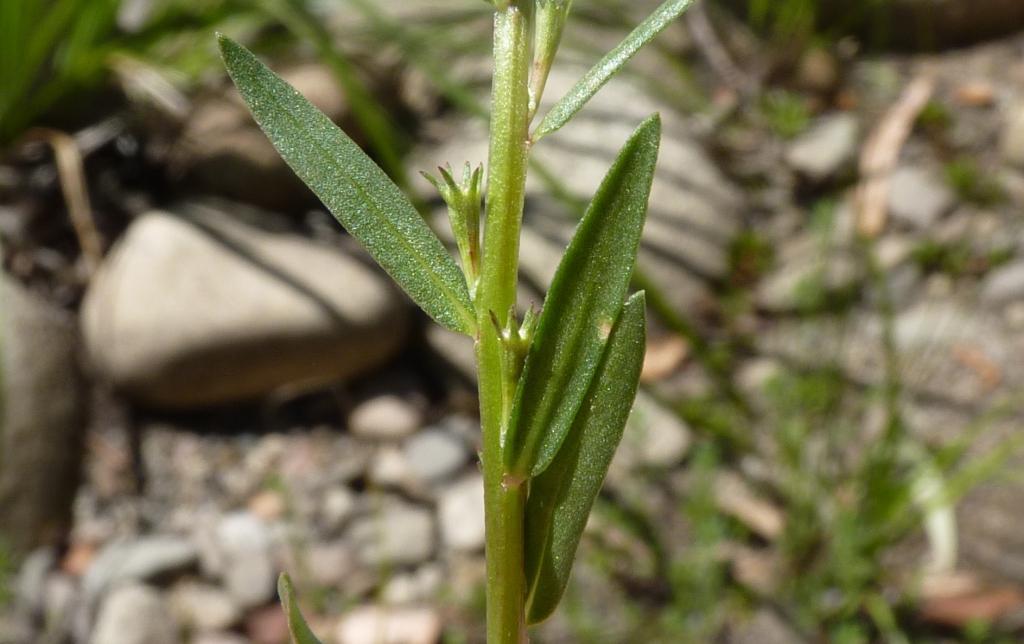Lythrum hyssopifolia
L. Lesser LoosestrifeAnnual herb, decumbent to ascending, to 50 cm tall, glabrous; stems ribbed, to 60 cm long. Leaves mostly alternate, linear to oblong or oblong-lanceolate, 0.5–4 cm long, 2–10 mm wide, sessile or subsessile; apex acute to obtuse; base obtuse. Flowers solitary in upper leaf axils; pedicel to 1 mm long; hypanthium obconical, 3–6 mm long, c. 1 mm diam., appendages 4–6, narrow-triangular, 1–1.5 mm long; sepals 4–6, triangular, 0.5–1 mm long, with apical hair tuft; petals 4–6, spreading, ovate, 1–4 mm long, pink, blue or purple; stamens usually 4–6, rarely 8–12 and dimorphic, included to slightly exserted. Capsule cylindric, about the same length as hypanthium, dehiscing by 2–4 valves. Flowers mainly Sep.–Feb.
LoM, MuM, Wim, GleP, Brid, VVP, VRiv, MSB, RobP, MuF, GipP, OtP, WaP, Gold, CVU, GGr, DunT, NIS, EGL, EGU, WPro, HSF, HNF, OtR, Strz, MonT, VAlp. All States (introduced WA). Southern Europe. Widespread across much of Victoria, usually in damp or flooded areas.
Jeanes, J.A. (1996). Lythraceae. In: Walsh, N.G.; Entwisle, T.J., Flora of Victoria Vol. 3, Dicotyledons Winteraceae to Myrtaceae, pp. 909–911. Inkata Press, Melbourne.
 Spinning
Spinning




